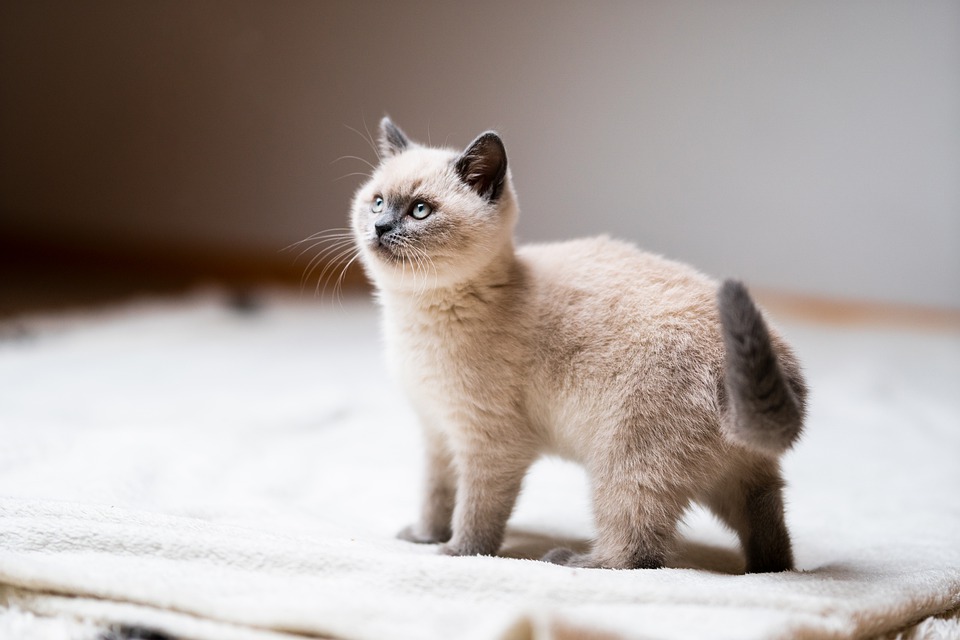Teaching Your Cat to Greet People Politely: A Guide to Polite Feline Behavior
Subtitle: Enhancing Your Cat’s Social Skills for Pleasant Interactions
Introduction: Building a Polite and Sociable Feline Companion
Having a polite and well-behaved cat can greatly enhance your relationship and interactions with your furry friend. Teaching your cat to greet people politely is an important aspect of socializing them and ensuring pleasant interactions with both familiar and unfamiliar individuals. This guide will provide you with valuable tips and techniques to help your cat develop polite feline behavior.
Understanding the Benefits of Socializing Your Cat
Socializing your cat is crucial for their overall well-being and happiness. A well-socialized cat is more confident, less likely to exhibit aggressive behavior, and more adaptable to new environments and experiences. By teaching your cat polite greetings, you are helping them build positive associations with human interaction, which can reduce anxiety and stress in social situations.
The Role of Training in Shaping Your Cat’s Behavior
Training plays a vital role in shaping your cat’s behavior, including their ability to greet people politely. Cats are intelligent animals and can be trained using positive reinforcement techniques. With patience, consistency, and the use of rewards, you can teach your cat to exhibit polite behavior when meeting new people.
Section 1: Preparing Your Cat for Polite Greetings
1.1 Ensuring a Positive Environment
Creating a safe and calm space for your cat is essential for their overall well-being. Provide them with a designated area where they can retreat and feel secure. Additionally, ensure that your cat has plenty of mental and physical stimulation, such as interactive toys and scratching posts, to prevent boredom and frustration.
1.2 Establishing a Trusting Relationship
Building a trusting relationship with your cat is crucial for successful training. Use gentle handling and positive reinforcement techniques to earn their trust. Encourage your cat’s natural curiosity and playfulness by engaging in interactive play sessions and providing them with opportunities for exploration.
Section 2: Training Techniques for Polite Greetings
2.1 Teaching Basic Commands
Introducing basic commands like “sit” can help you control your cat’s behavior during greetings. Start by holding a treat above your cat’s head, and as they naturally sit down to look up at the treat, say the command “sit” and reward them with the treat. Repeat this process consistently until your cat associates the command with the action.
2.2 Desensitizing Your Cat to Human Touch
Some cats may be sensitive to touch, especially from strangers. To desensitize your cat, gradually introduce touch and handling exercises. Start with gentle strokes on areas your cat enjoys being touched, like their chin or back, and gradually work your way to other parts of their body. Reward your cat with treats and praise during each session to create positive associations with touch.
2.3 Encouraging Appropriate Social Interaction
Introduce controlled socialization with familiar and trusted individuals. Start by having the person approach your cat calmly and quietly. Reward your cat with treats and praise for calm behavior during the interaction. Gradually increase the duration and intensity of these interactions over time.
Section 3: Troubleshooting Common Challenges
3.1 Dealing with Shyness and Fearful Behavior
If your cat exhibits shyness or fearful behavior, be patient and provide gradual exposure to new people and environments. Allow your cat to approach new individuals at their own pace, and never force them into uncomfortable situations. If necessary, seek professional help from a certified cat behaviorist who can provide additional guidance.
3.2 Addressing Overexcitement and Jumping
If your cat becomes overexcited and jumps on people during greetings, redirect their energy with interactive toys and playtime before introducing guests. Reinforce calm behavior by rewarding your cat with treats and distractions, such as a favorite toy or puzzle feeder, during greetings. Consistency is key in discouraging unwanted behavior.
FAQs: Frequently Asked Questions
1. Can all cats be trained to greet people politely?
Yes, all cats have the capacity to learn polite greetings through positive reinforcement training techniques.
2. How long does it generally take to teach a cat polite greetings?
The time it takes to teach your cat polite greetings may vary depending on their individual personality and previous experiences. However, with consistent training, most cats can learn polite greetings within a few weeks to a few months.
3. Are there any age restrictions for training cats?
Cats of all ages can be trained, although it may be easier to teach younger cats as they are more receptive to learning. However, older cats can still learn new behaviors with patience and positive reinforcement.
4. What should I do if my cat doesn’t respond to training techniques?
If your cat doesn’t respond to training techniques, it may be helpful to seek guidance from a certified cat behaviorist who can assess your cat’s behavior and provide tailored recommendations.
5. Can I use punishment as a training method for discouraging unwanted behavior?
It is not recommended to use punishment as a training method for cats. Positive reinforcement, such as treats and praise, is a more effective and humane approach to shaping your cat’s behavior.
Conclusion: Enjoying Harmonious Interactions with a Polite Feline Companion
Teaching your cat to greet people politely is an investment in their social skills and overall well-being. By following the techniques outlined in this guide, you can enjoy harmonious and pleasant interactions with your feline companion. Remember to continue training and socializing your cat throughout their life to maintain their polite behavior and strengthen the bond between you and your furry friend.








